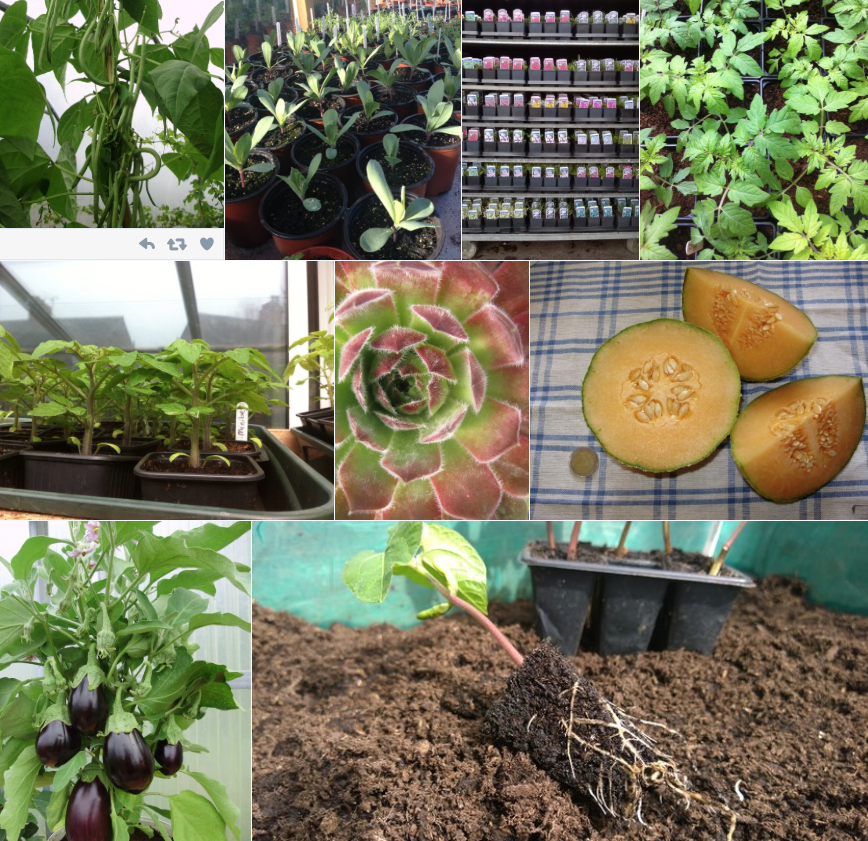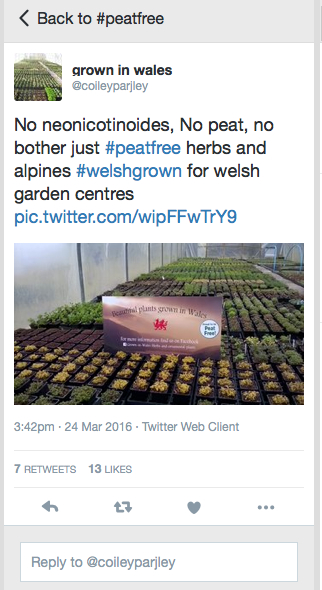The peat-free message is finally being broadcast far and wide – but it’s gardeners and growers, rather than the gardening media, who are doing the telling.
“There’s a big shift underway in the gardening world. It’s been a long, tedious and frustrating time in the making, with many false starts, but finally, it’s happening. It’s a shift that will eventually transform the way we all grow plants in our gardens and greenhouses, on our windowsills, in our porches, and down on our allotments.”
I penned these words myself some 18 months ago, in ‘Snowball effect’, which you can read here. Back then I highlighted the fact that the unstoppable and inevitable switch to peat-free growing and gardening would be led not by us everyday gardeners, but by commercial plant growers and professional horticulturists. It was clear back then that it would be horticulture, not home gardening, that would power the transition to the widespread take-up of composts made from truly renewable and ecologically sustainable raw materials.

My prediction – I rarely make them – was that gardeners, who are responsible for two-thirds of the peat used for potting in the UK, would soon twig that many of the top-quality plants they load into their trolleys, or click to order online, have been grown without a crumb of nature-wrecking peat. I dreamed of labels boasting, ‘This plant was grown in peat-free compost made from genuinely renewable materials that have not destroyed natural habitats.’ But while some visionary growers, working with forward-thinking garden centres and other retailers, now make ‘grown peat-free’ a key and proud selling point (I become a rabid impulse-buyer whenever I see ‘peat-free’, even if it’s in Lilliputian-sized lettering on the label), many plant sellers have benches replete with plants grown in modern, nature-friendly composts, but no one knows – there’s nowt on the label saying so. It’s a fair bet that even the gardening retailers may not have a clue that the top-notch plants they’re selling are what eco-savvy, gives-more-than-it-takes gardening now looks like.
The natural, knock-on ‘snowball effect’ of seeing and buying top-quality plants, clearly labelled ‘peat-free’, would surely be to build confidence among gardeners about making the pain-free switch to peat-free growing (the current government target is to remove peat from gardening by 2020). Nothing demolishes the ‘peat-free compost is rubbish’ myth quite as effectively as buying a hearty plant rooted in a modern and reliable peat-free compost. So it’s time for those who grow our plants to ditch coyness and tell it how it is; growers need to tell the sellers of their wares and then, if they want to increase sales, they can tell us gardeners. It’s time to join hands and hoist peat-free flags across the land. It’s quiet, it’s humble, its movers are bags of brown dirt, but this is gardening history in the making.

And gardeners are here and raring to help with the flag-raising. As we search in vain in gardening magazines for positive stories about businesses who’ve moved over to peat-free plant growing, or the recent news about how SylvaGrow, a professional-quality peat-free, has bagged three Which? Gardening magazine Best Buy awards, a new, disruptive kind of ‘citizen journalism’ is doing the job instead. Where mainstream, largely pro-peat (and often vociferously anti-peat-free) gardening journalism and writing has failed (or refused) to tell these ‘good for gardening, good for nature’ stories, we’re now telling them for ourselves. Gardening magazines need to decide which side of gardening history they’re on; by ignoring this revolution in gardening and horticulture they’re failing their readers.
Social media, especially Twitter, is deftly bypassing the redundant myths still peddled about gardening without peat. Without any ‘campaign strategy’ – other than its inherent capacity to instantly share and connect – it is linking up gardeners with commercial growers, peat-free compost-makers, garden centres, nurseries, peatland ecologists, conservationists… the connectivity list goes on. If you want a quick persuader, check out what’s happening on the ‘#peatfree’ hashtag, where every tweet containing ‘#peatfree’ is brought together (you don’t have to join Twitter to take a peek, and other hashtags are available).

It’s a great leveller; you’ll see tweets from peat-free gardeners rubbing shoulders with those from nurseries growing hundreds, thousands, or tens of thousands of peat-free plants. You’ll find peat-free compost-makers both strutting their stuff and talking directly to gardeners wanting to buy their products (and helping them find local stockists). You’ll see pictures ranging from ones snapped in small, much-loved back gardens to those taken in the big, peat-free greenhouses of the Royal Horticultural Society at Wisley. You’ll see plucky plants grown peat-free from seed to plate, and ‘root reveals’ to show how things are doing under the compost surface, and you’ll get a virtual nose around inside fecund greenhouses and polytunnels, large and small, fuelled by modern, renewable, peat-free composts.
You’ll hear a few gripes, too, about lesser-performing peat-frees (a great way to work out which mixes to avoid), learn stuff, pick up sowing and growing tips, and receive encouragement. This is ‘crowdsourcing’ in action. It can be fuelled by each and every one of us, of all ages, great and small, whether we have a windowsill or half an acre to play with, and we’re clearly loving it.
We can all join in with this bit of history-making; you just need a clever phone. We don’t need to ask for permission, and we don’t need to worry about stepping on anyone’s toes – especially those of Big Peat. Who would have thought that social media, derided as it often is, would be adopted by green- (in every sense) fingered folk happy to help push the peat-free snowball gently along. All we need do now is to get ‘#peatfree’ trending. It’ll happen, one day soon (I’m allowed another prediction).
But the best bit, the most powerful and persuasive bit, the change-making bit, the mindset-shifting bit, the peat bog-protecting bit, is that it’s giving us – all who are united by our love of gardening and a reverence for nature – a long-overdue wake-up call: we can make change happen.
It’s not bad going for a # bolted onto ‘peat’ and ‘free’.
Text and images © John Walker
Find John on Twitter @earthFgardener


